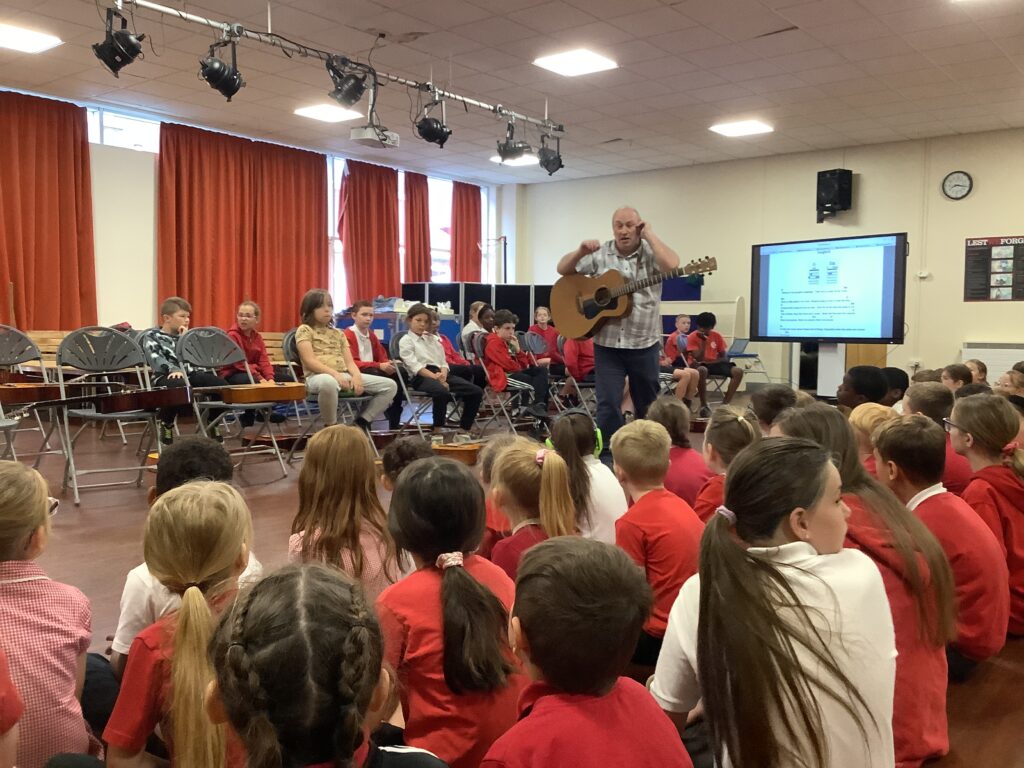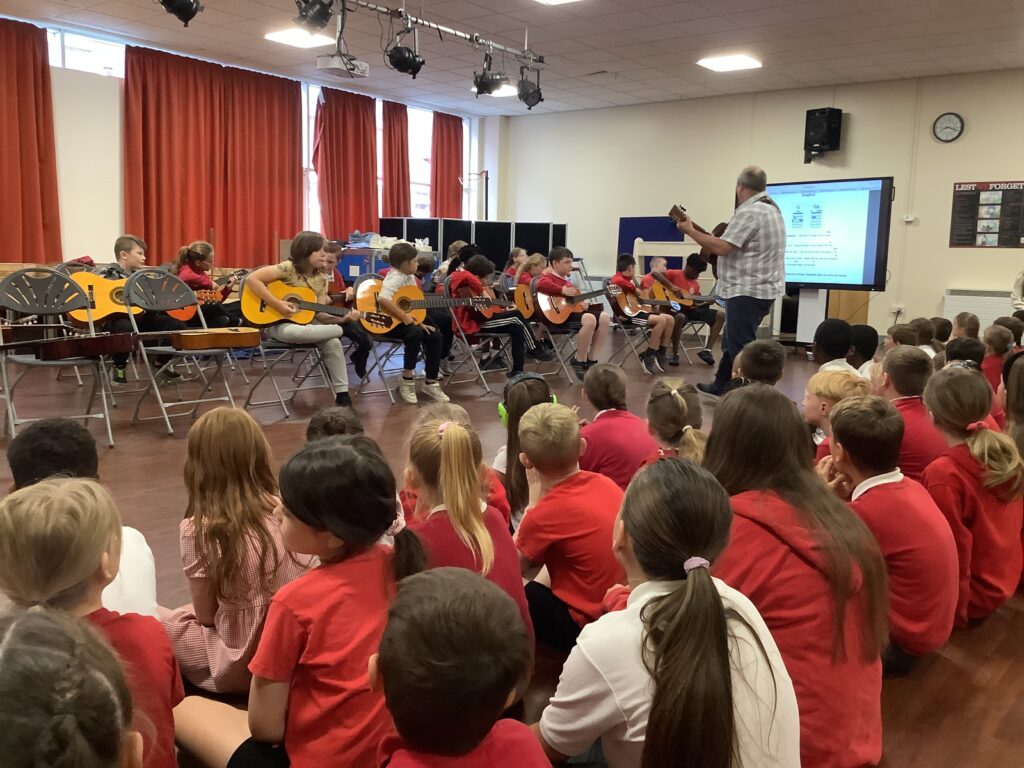During the Spring Term, 2024, Carcroft Change Makers worked collaboratively to develop the ‘Carcroft Pledge’. We can’t wait to share this with whole school during our Summer Term!
Category : Curriculum
Online Safety
Our pupils are growing up in a world of ever-changing technology. While we feel that the use of technology is a largely positive aspect of modern life, we cannot ignore the risks that can be associated.
Throughout school we aim to teach children:
- about the impact of cyber-bullying and what to do if they have been affected.
- to be vigilant when communicating online recognising that people may not always be who they say they are and to be sensible about what they share.
- to tell an adult they trust if something is upsetting them.
- to question the reliability of information given through a web based source.
- to search responsibly for information while using internet browsers.
We understand that much of our pupil’s use of the internet will occur at home, away from the school filters.
Below are a list of useful websites, advice and resources that you may find helpful when navigating the issue of online safety with your child. At the bottom of this page are resources that your child can directly access as well to help them learn about online safety.
Useful resources and links
Thinkuknow http://www.thinkuknow.co.uk
Thinkuknow is an education programme from the National Crime Agency’s CEOP Command. Since 2006, it aims to ensure that everyone has access to this practical information – children, young people, their parents and carers and the professionals who work with them.
Internet Matters https://www.internetmatters.org/advice/esafety-leaflets-resources/
A comprehensive web resource with a wide array of tips and advice on how to navigate the online world with your child. Some of their guidance we attach below but you can find even more by visiting the link.
National Online Safety https://nationalonlinesafety.com/resources/platform-guides/
National Online Safety’s mission is to make the internet a safer place for children. They aim to do this by equipping school staff, parents and children with the knowledge they need to understand online dangers and how best to react should an incident arise. The link above provides up to date information about a wide variety of social media apps and platforms your child might be using.
NSPCC http://www.nspcc.org.uk/preventing-abuse/keeping-children-safe/share-aware/
The NSPCC are the first to admit that the internet is amazing. Children can play, learn, create and connect – opening up a whole world of exciting possibilities. But with the digital world changing all the time, how can you make sure your child’s staying safe? That’s where the NSPCC come in. Whether you’re an online expert or you’re not sure where to start, their tools and advice will help you keep your child safe.
Childnet http://www.childnet.com/parents-and-carers
Childnet International is a registered UK charity that aims to make the internet a safe place for children and young people. Packed with resources it is a great resource for parents.
CEOP http://ceop.police.uk/safety-centre/
Child Exploitation and Online Protection (CEOP) is part of the National Crime Agency and their website can be used to report if you are worried about online abuse or the way someone is communicating online.
BBC https://www.bbc.com/ownit
The BBC have a website and app called Own It. The website has a lot of content for children to help them navigate their online lives, and the free smartphone app comes with a special keyboard which can intervene with help and support in the moments that children need it the most.
SafetoNet https://safetonet.com/
SafeToNet is technology that educates children “in-the-moment” as they use their device. It is a safeguarding assistant that helps them become responsible and safe digital citizens. Its power lies in a smart keyboard that detects risks in real-time. It steers children away from trouble by filtering harmful outgoing messages before they can be sent and any damage can be done.
A guide to Apps & Social Media
The number of apps and social media channels your child could be exposed to grow all the time, as does an app’s functionality. We recommend you visit Net Aware to read the latest and most current advice on over 70 apps to ensure you know what they do, how you can limit their features as well as recommended age restrictions.
The apps included are:
- Fortnite
- Snapchat
- YouTube
- Minecraft
- Clash of Clans & Clash Royale
- Kik
- Friv
- Dubsmash
- Wink
- YOLO
- TikTok
- And many, many more
Resources for children to use
Below are some links that children themselves can access for help when navigating the tricky subject of online safety,
Reception – Year 2
Below are a number of links that are tailored for children in the younger year groups.
https://www.thinkuknow.co.uk/5_7/
https://www.netsmartzkids.org/
https://www.childnet.com/resources/smartie-the-penguin
Year 3 – Year 6
Below are links more suitable for older children.
https://www.thinkuknow.co.uk/8_10/
https://www.nsteens.org/
Chapter One Celebrations!
This year, as a school, we have taken part in Chapter One.This has meant that many of our pupils in KS1 have had the opportunity to read 1:1 with a volunteer at least once a week for the whole year, that’s reading at least a whopping 40 times this year! Not only has this reading opportunity supported our pupils to develop their reading skills and better their fluency it has also boosted their love of reading! All of the pupils that have taken part in this have made fantastic progress with some now reaching the top book band level! We are super proud of them all! Yesterday, we got to take part in a live call with our Chapter One representative, as well as many of the volunteers that have been reading with our pupils. It was lovely for us all to put a face to people, as well as listen to the lovely feedback that our volunteers shared. It was such a lovely moment to share with our pupils, and the great news is there will be much more of this in the next academic year!


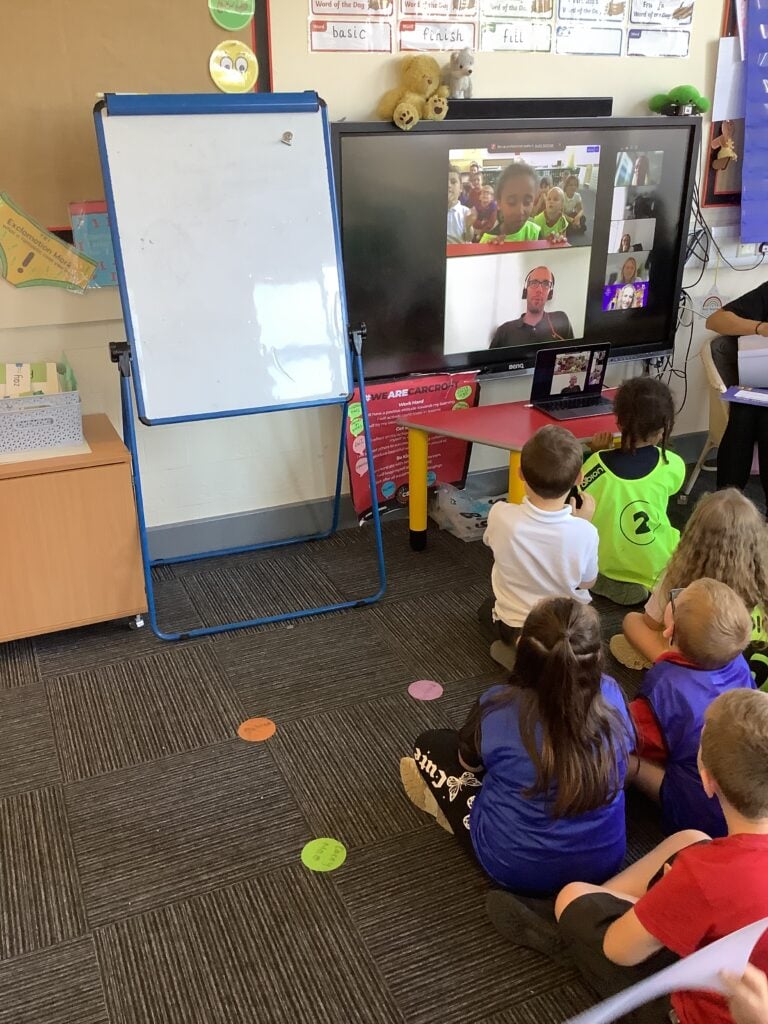


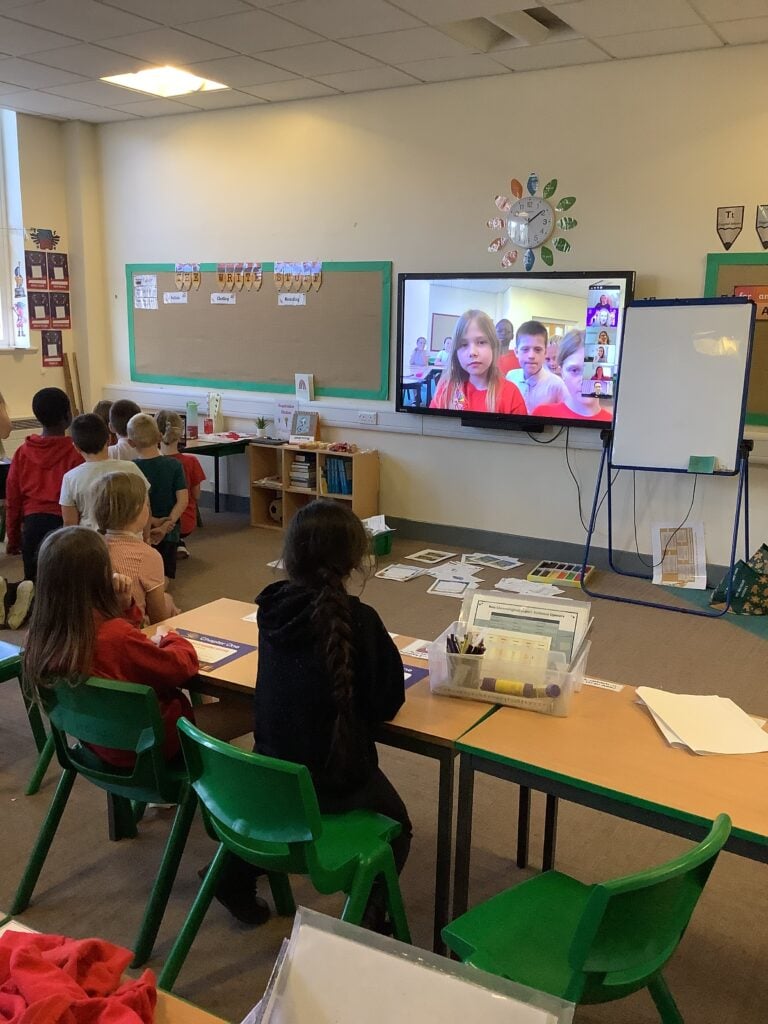




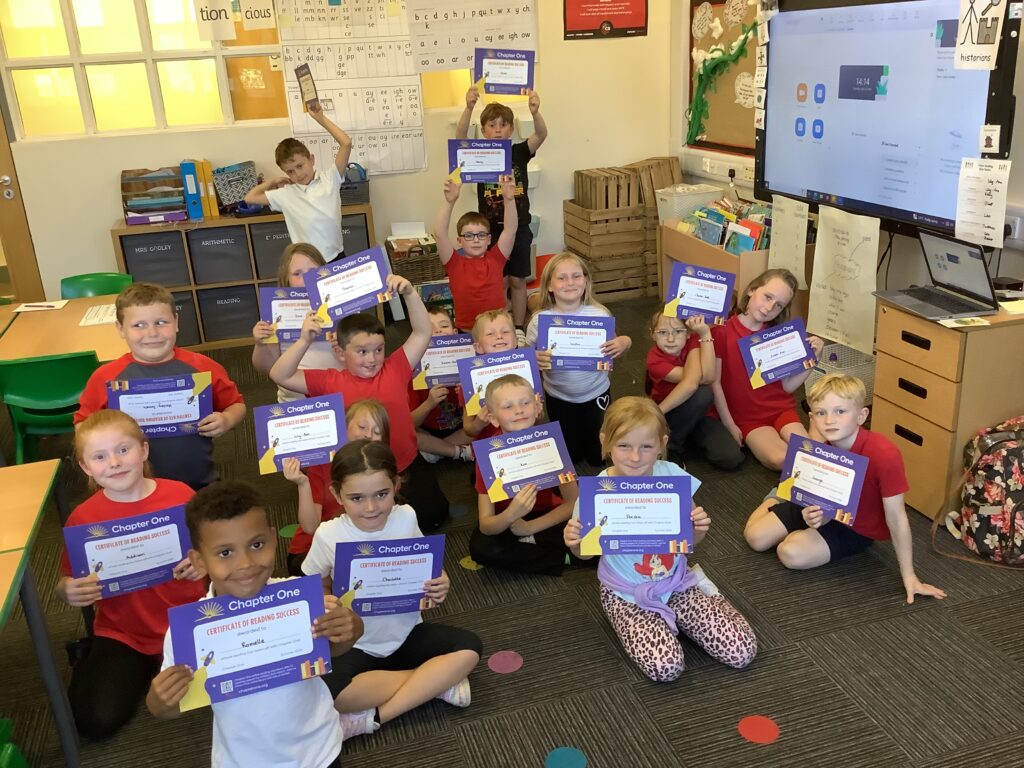
Mixing secondary colours
In class today we have looked at primary and secondary colours and how we make these using primary colours. We did a fab job at our colour wheels and then we applied this to our rangoli patterns.









Boombox Fun
Miss Marsh has treated LKS2 to their own boombox which allows us to listen to music during our break times! We certainly made the most of the sunshine this morning when we danced and sang to some of our favourite songs! Shout out to Sharni-Mae for her beautiful karaoke skills!
Reading Challenge Golden Ticket Winners
A HUGE shoutout to Luke and Zach who earned themselves a golden ticket in our reading challenge from this term. Each of them has read every single day at home to move up on our challenge board. They even started to overlap some of the other children in crew showing just how much they have read! I am so proud of your enthusiasm with this challenge boys and I praise your efforts in making sure you have read at home every night. I hope you love your prizes!
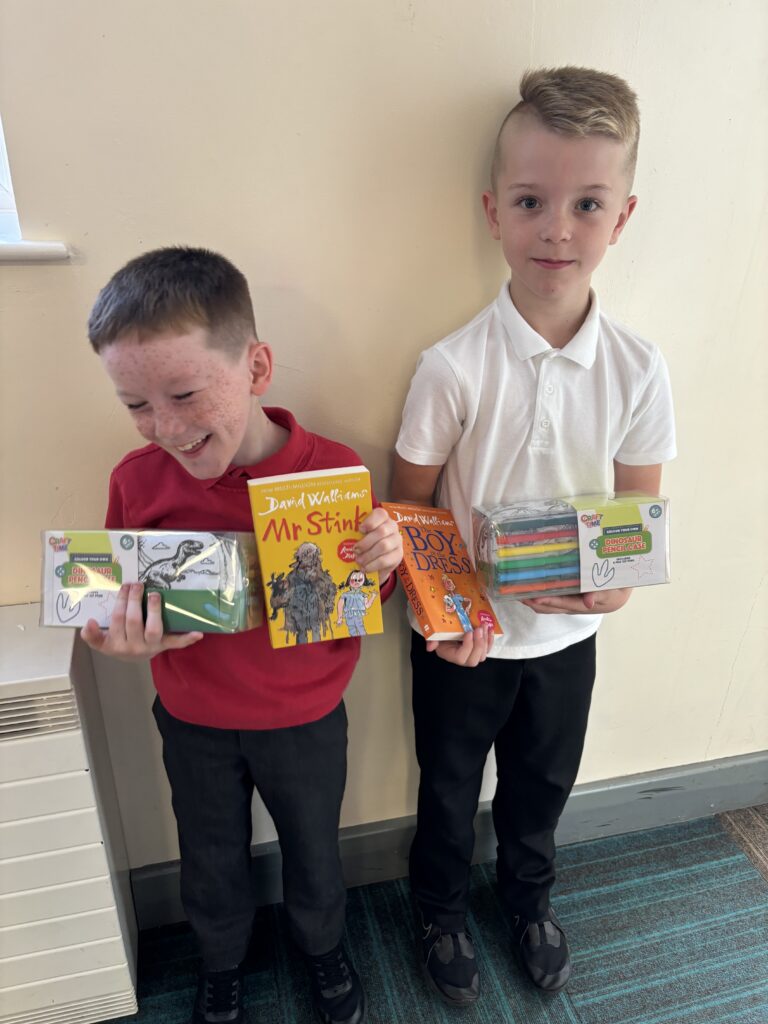

Y1 tile artwork
To celebrate the end of our Islam learning we created an Islamic artwork tile using dots and lines. We did this through learning about the artist William Morris who designs lots of patterned artwork for wallpapers.






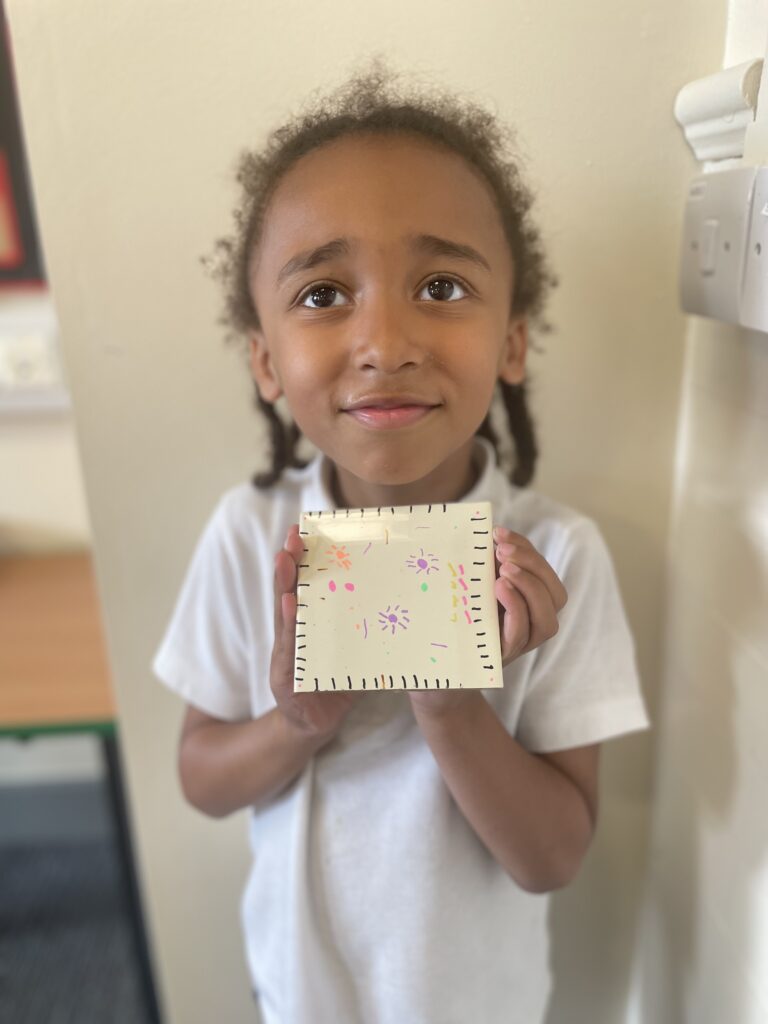

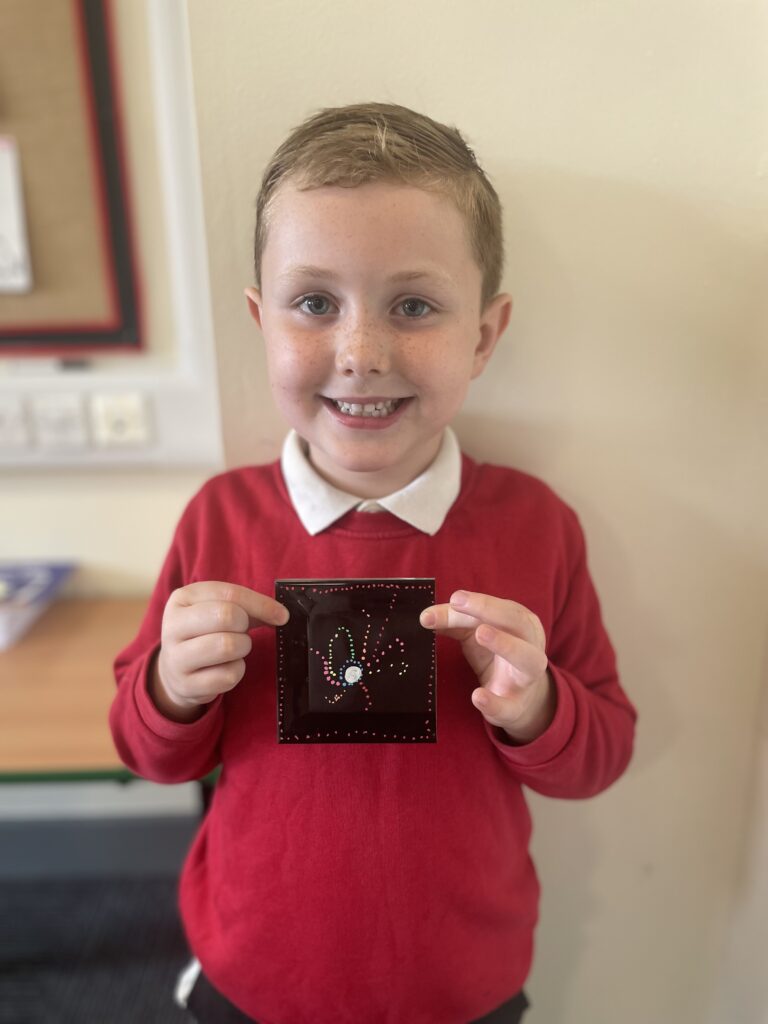

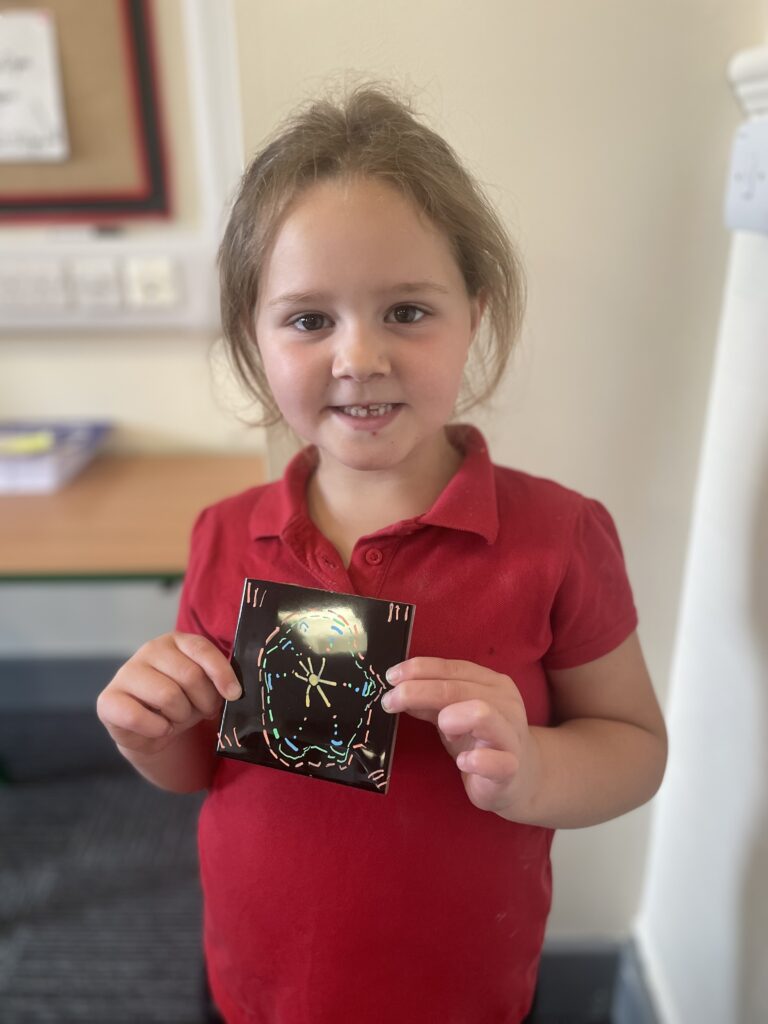






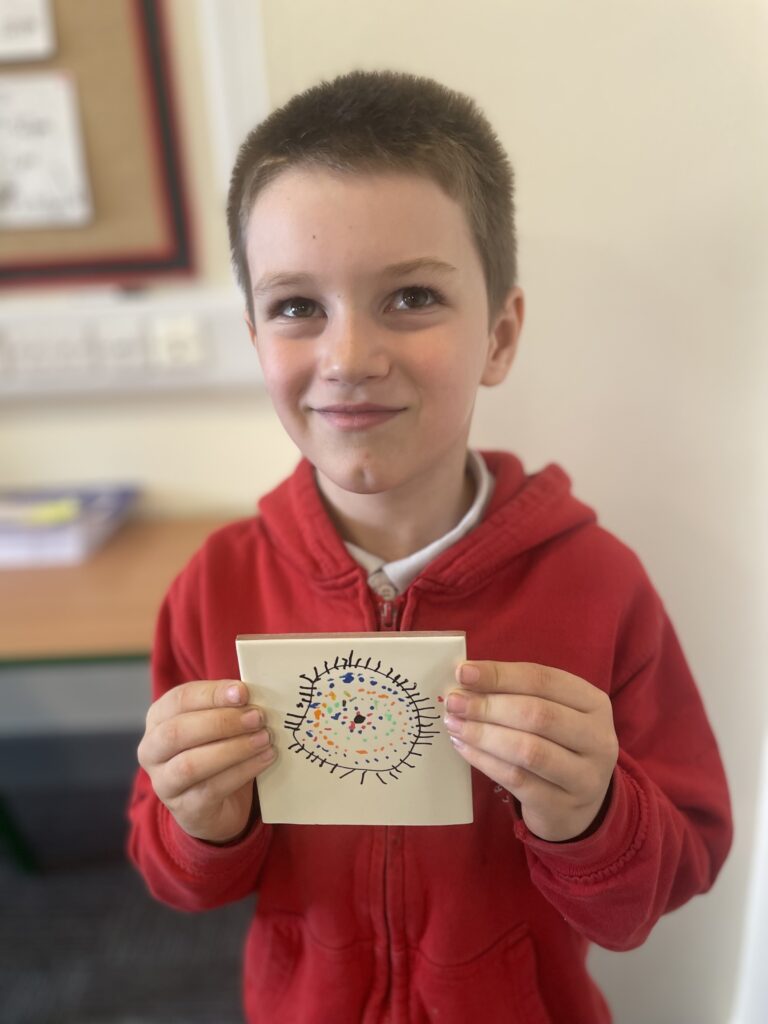




Scotties celebration
In our Scotties heroes session this morning we enjoyed toasting marshmallows!







Painting (and doughnuts!)
Painting has been a firm favourite in Crew MW this week!

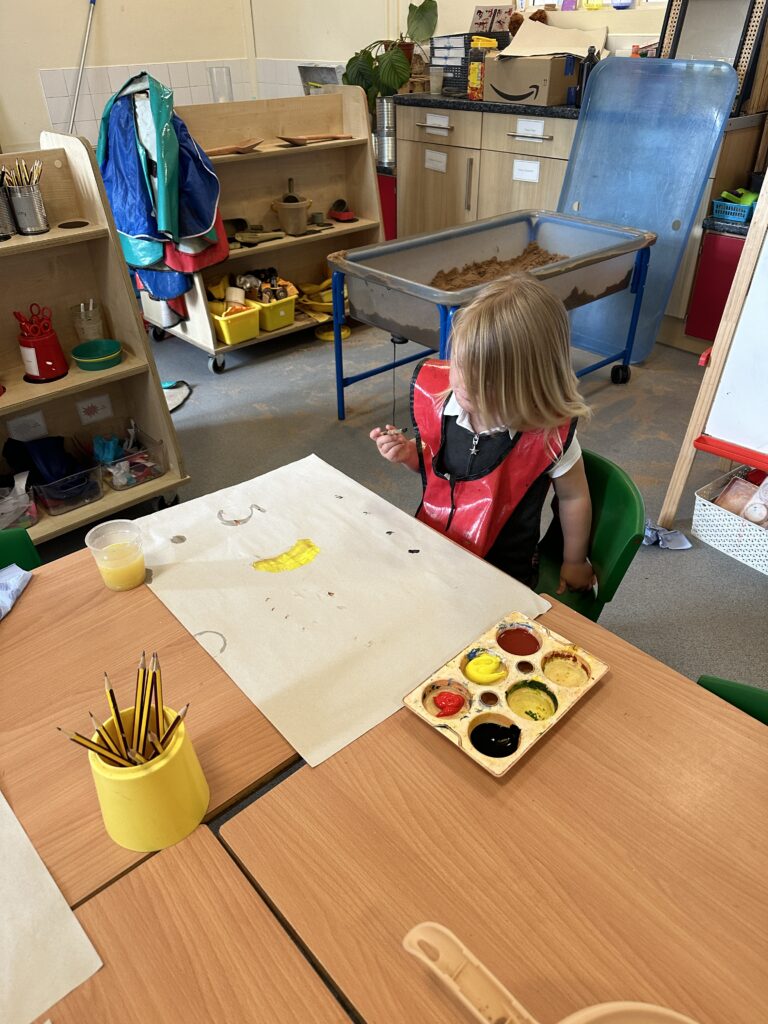


After all that painting we definitely deserved a treat… doughnuts! Thank you for bringing the doughnuts in Oliver, we hope you enjoyed your birthday!


Sharing our story – EYFS bin stickers
On Friday, Crew MW went on a little walk around school distributing our final product bin stickers. The stickers will be stuck on the bins throughout school and as the children move through school they will always be able to see their work from this expedition. Whilst we walked round, we also spotted another final product displayed on the wall near the dinner hall – we loved the illustrations of the bees!

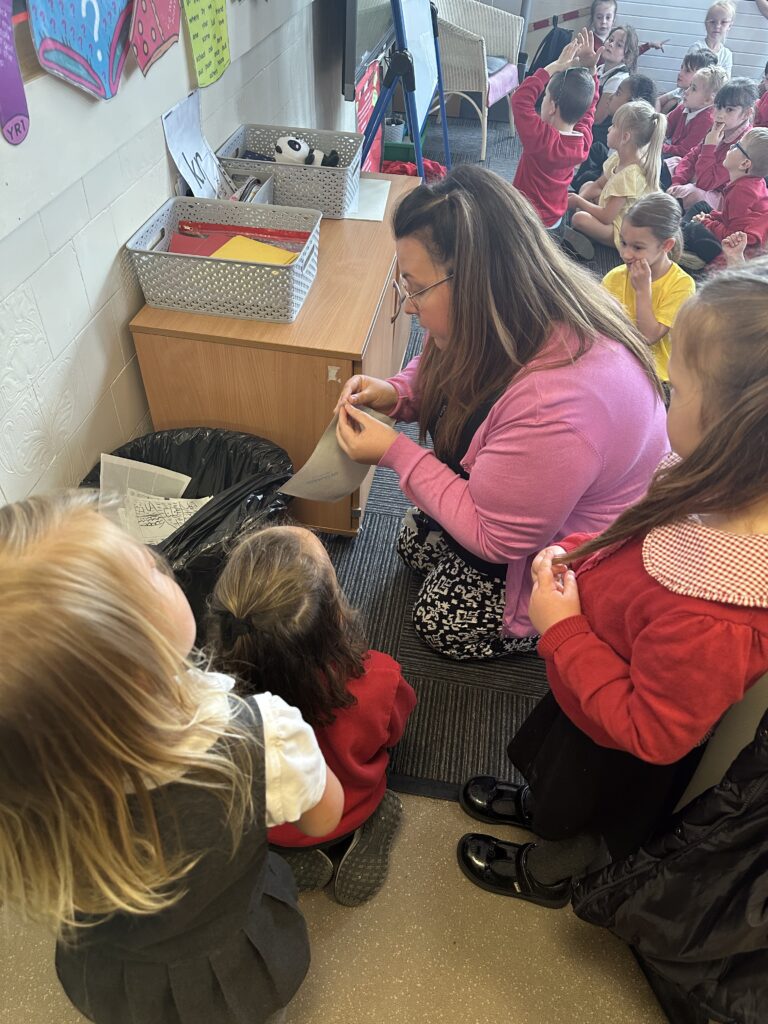
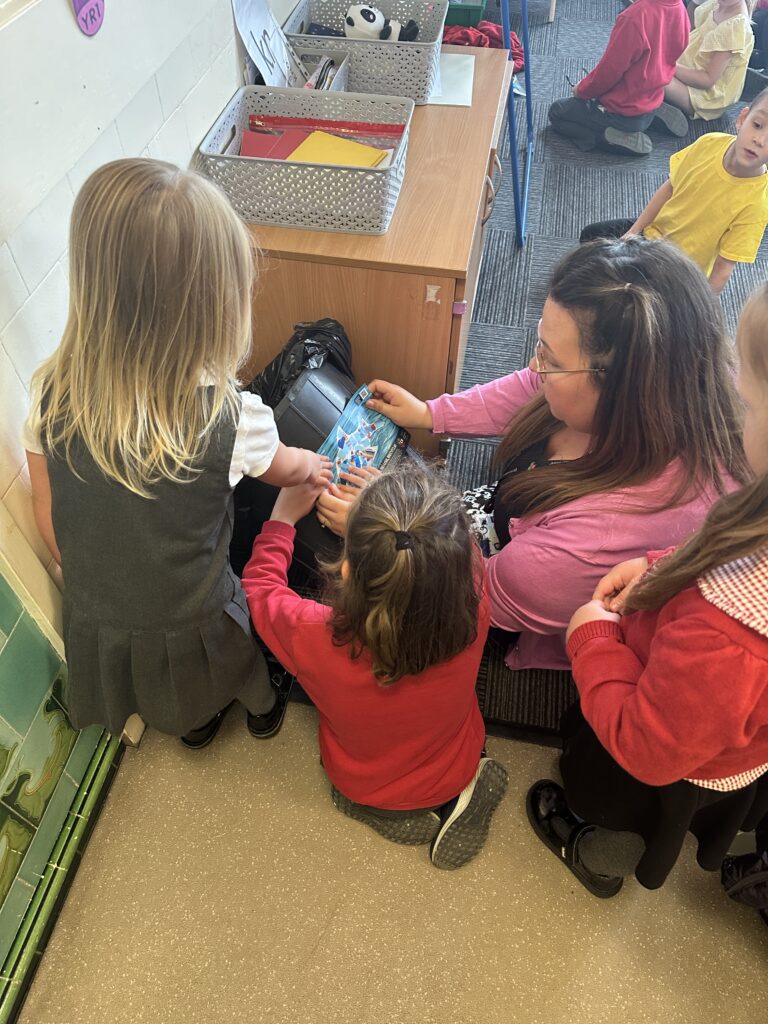



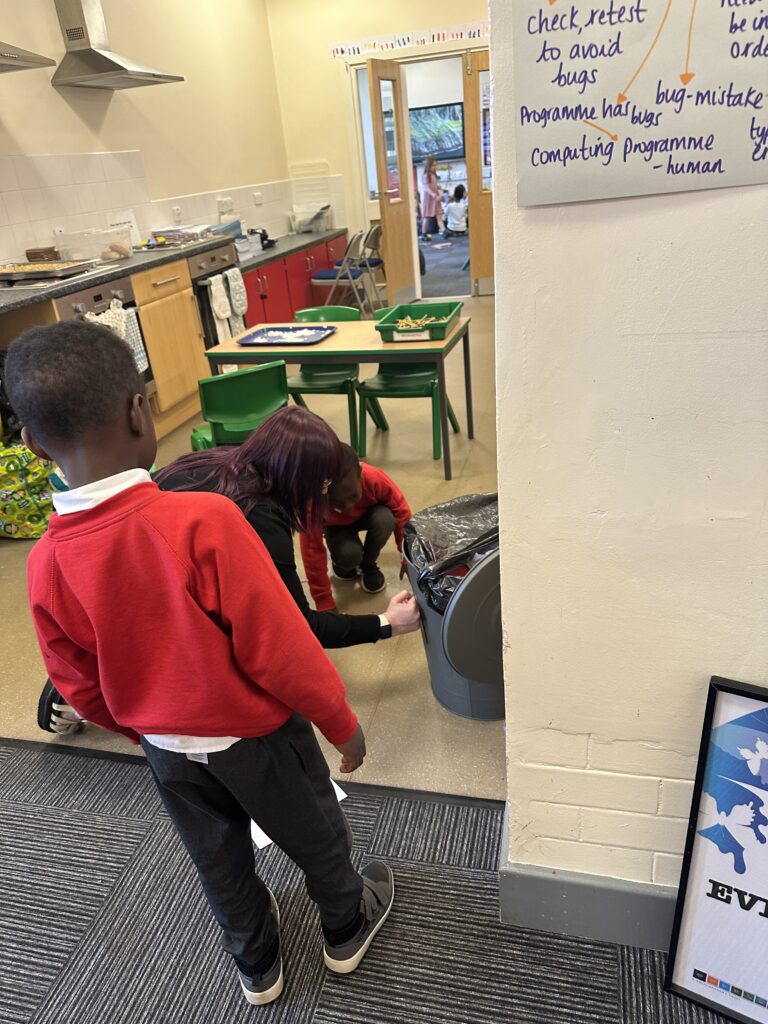




Publishing our writing
We are really enjoying publishing our persuasive letters and can’t wait to get these sent to Mrs Atherton.




Guitar celebrations in year 5
We were all so proud of our year 5 children as they showcased their incredible guitar skills to the rest of the school and to parents and carers. Thank you to everyone that joined us 🙂
